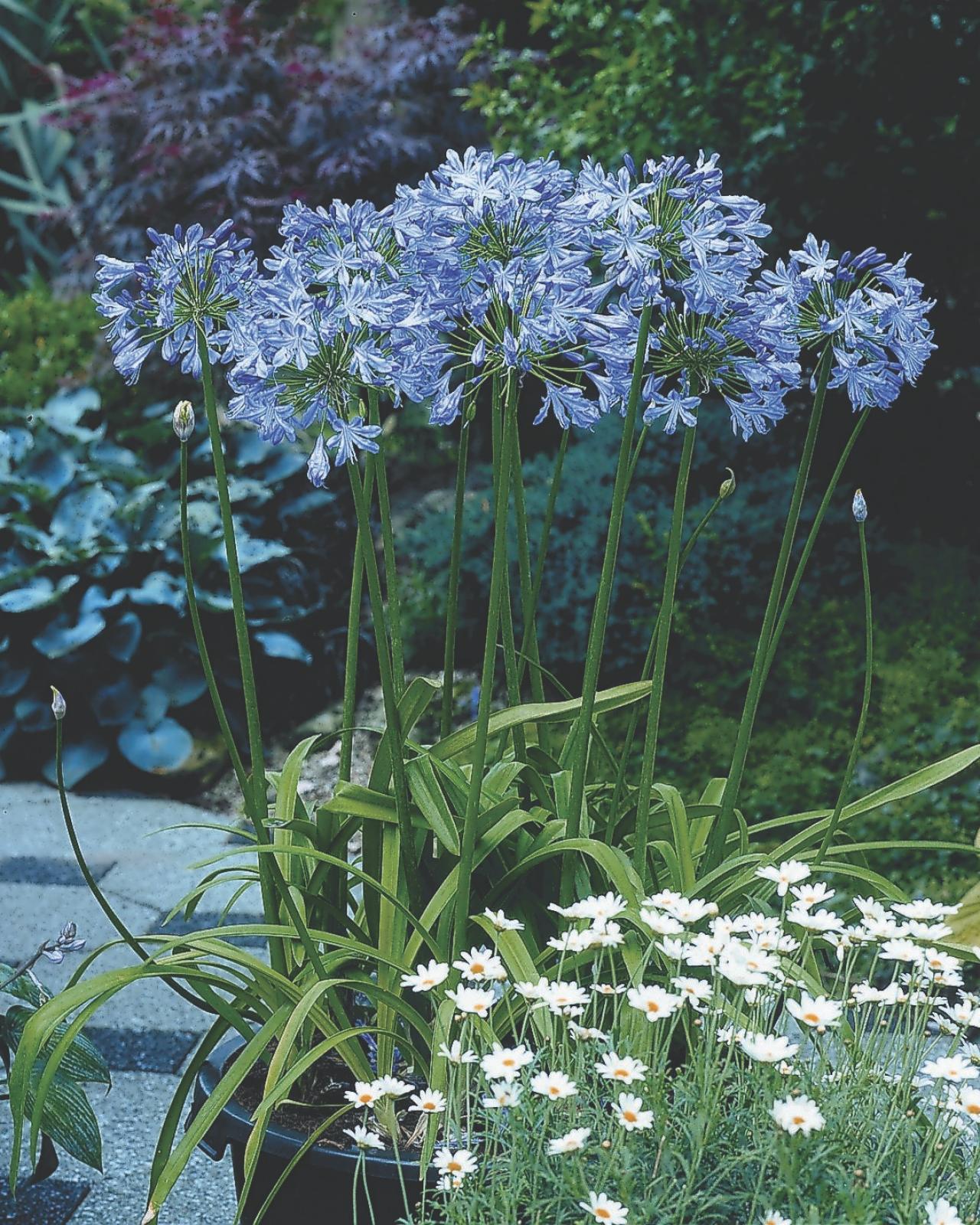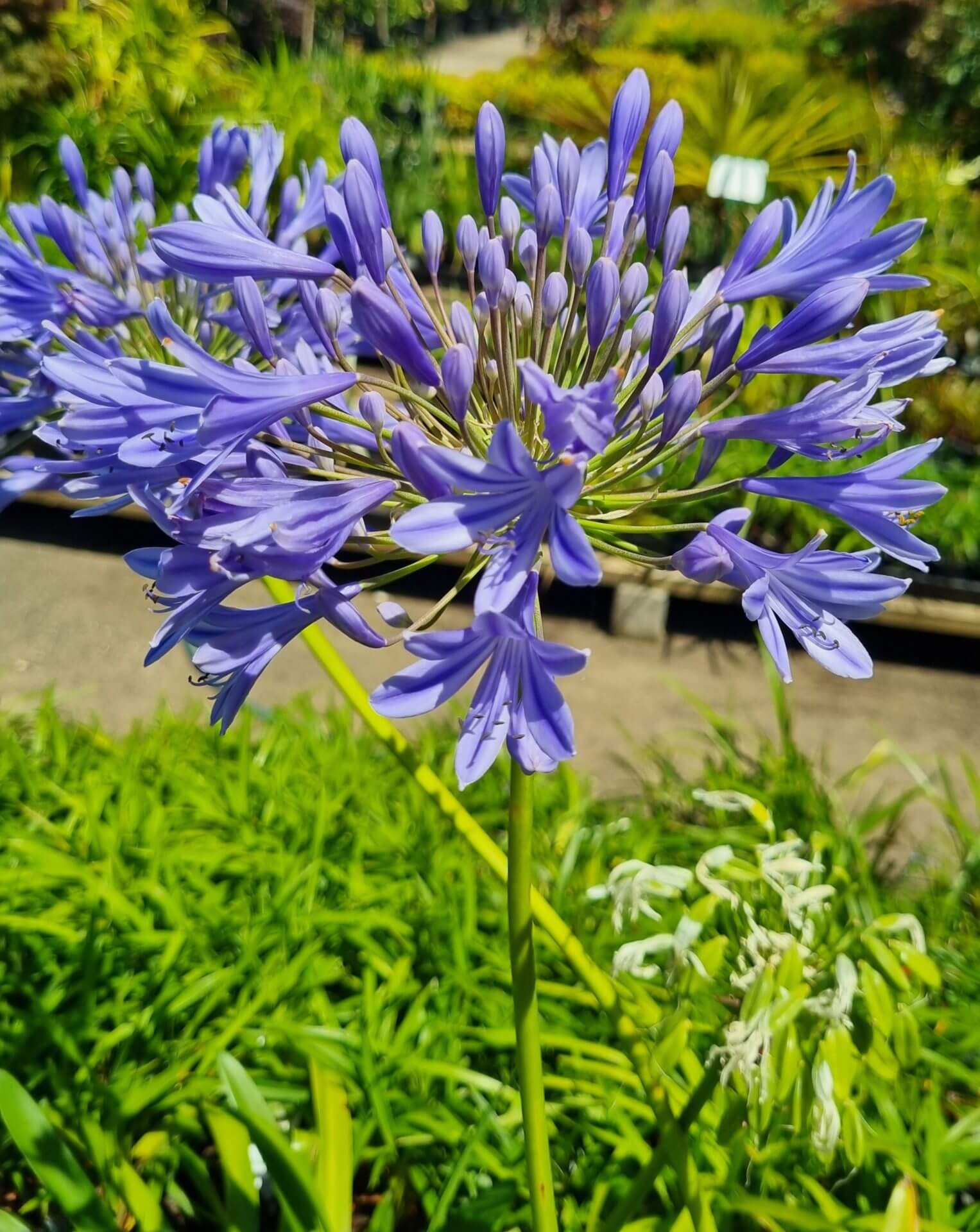Expanding Agapanthus: A Complete Overview to Beautiful Blooms
Expanding Agapanthus: A Complete Overview to Beautiful Blooms
Blog Article
Grasping the Art of Agapanthus Treatment: Essential Steps for Healthy And Balanced Development and Lively Blossoms
In the world of gardening, the farming of agapanthus stands as a fulfilling endeavor for those that seek to support these stylish blooming plants. With their striking flowers and elegant vegetation, agapanthus has actually recorded the interest of gardeners worldwide. However, accomplishing optimum growth and vivid blooms needs a nuanced method that encompasses numerous vital steps. From choosing the appropriate selection to mastering pruning methods, the trip in the direction of cultivating growing agapanthus plants is complex and holds the vital to unlocking the complete possibility of these herb gems.

Selecting the Right Agapanthus Selection

When selecting the appropriate Agapanthus range for your yard, think about aspects such as climate viability, flower color, and development behavior. In addition, take into consideration the environment in your region to guarantee the Agapanthus variety you pick can grow in your details problems. Recognizing the development practice of different Agapanthus selections is vital for appropriate placement within your yard.
Ideal Planting Problems
Taking into consideration the optimal ecological needs is necessary for effective Agapanthus farming. Agapanthus prospers in well-draining soil with a slightly acidic to neutral pH level. When growing, select an area that gets full sunlight to partial color. In hotter environments, offering some mid-day color can stop scorching of the leaves. Agapanthus plants are delicate to cold temperature levels and need to be protected from frost during winter months.
To guarantee healthy development and vibrant blooms, plant Agapanthus bulbs at a deepness of concerning 2-4 inches and room them 8-12 inches apart. Mulching around the base of the plants assists retain dampness and reduces weed development.
Watering and Feeding Tips
Maintaining correct wetness levels and giving essential nutrients are vital aspects in the treatment regimen for Agapanthus plants. When it comes to sprinkling Agapanthus, it is critical to strike an equilibrium. These plants like continually damp dirt yet are at risk to root rot if overwatered.
Feeding Agapanthus is important for promoting healthy development and respected blossoms. Apply a balanced plant food, such as a 10-10-10 formula, in the very early springtime as brand-new development arises. By adhering to these watering and fertilizing pointers, you can ensure your his response Agapanthus plants prosper and generate vivid, durable blossoms.
Pruning Methods for Agapanthus
Trimming Agapanthus plants at the ideal times and with appropriate strategies is vital for preserving their health and wellness and promoting optimum growth and blooming. The perfect time to prune Agapanthus remains in late winter or early spring prior to brand-new growth emerges. Begin by eliminating any type of dead or yellowing fallen leaves near the base of the plant. Cut them as short as feasible without harming the arising shoots.
Deadheading invested blossoms can additionally reroute the plant's power into creating even more blossoms instead than establishing seeds. If you want to collect seeds for propagation, leave some blossoms to mature and completely dry on the plant.
Remember to make use of clean, sharp tools to make accurate cuts and minimize the threat of presenting conditions. Agapanthus. Normal pruning will help keep your Agapanthus looking neat and healthy and balanced while making certain a plentiful screen of stunning flowers
Handling Common Parasites and Illness
After ensuring proper pruning strategies for Agapanthus, it is necessary to address typical pests and conditions that can impact the wellness and vigor of these plants. Agapanthus plants are typically sturdy but can still succumb specific concerns. One typical pest that influences Agapanthus is the Agapanthus gall midget. This tiny, orange fly lays its eggs in the vegetation, bring about distorted development and flower buds that stop working to open. To fight this bug, prune and ruin any kind of affected plant parts and take into consideration making use of insecticidal soap.
Additionally, Agapanthus Related Site plants can experience from root rot if they are grown in improperly draining dirt. By being cautious and taking prompt action versus insects and diseases, you can help your Agapanthus plants thrive and produce dynamic blooms. Agapanthus.

Verdict
In verdict, mastering the art of agapanthus care entails selecting the ideal selection, providing suitable planting conditions, appropriate watering and feeding, view publisher site ideal trimming techniques, and dealing with typical parasites and conditions. By adhering to these crucial steps, you can ensure healthy development and vibrant blossoms for your agapanthus plants. Bear in mind to frequently check and maintain your plants to promote their general health and longevity.
To make sure healthy and balanced growth and vibrant blooms, plant Agapanthus light bulbs at a depth of concerning 2-4 inches and space them 8-12 inches apart. By adhering to these watering and feeding tips, you can guarantee your Agapanthus plants grow and create dynamic, long-lasting blooms.
One common insect that affects Agapanthus is the Agapanthus gall midget. In addition, Agapanthus plants can endure from root rot if they are planted in badly draining pipes dirt. By following these essential actions, you can make certain healthy development and dynamic blossoms for your agapanthus plants.
Report this page